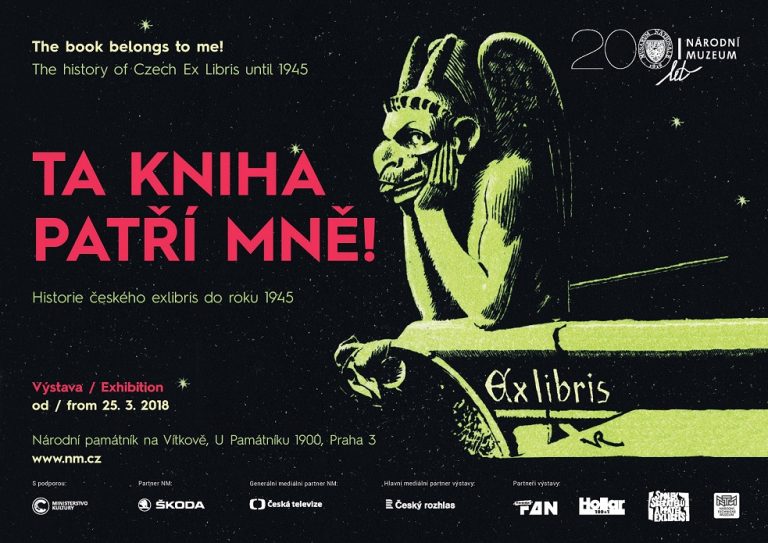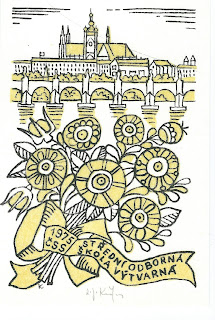When I was young there was quite a fad about the graphics of Alfons Mucha. It was the 1970s and his posters were blu-tacked to the bedroom walls of teenage girls all over the UK. I was no exception, but while my friends preferred his pensive and languid portrayals of women I went for his dynamic theatre poster of Sarah Bernhardt as Jeanne D'Arc. Had you asked me then about his nationality I would have confidently told you that Mucha was French. He wasn't - he was Czech and proud of it.
Born in
Ivančice, a small town south of Brno, Mucha studied in Brno and Munich, before going to Paris. Despite his success in Paris most of Mucha's life was spent in his homeland. If you only know Mucha from his French graphics, you will be surprised by his work in the Czech Republic. You soon realize that Mucha was an artist with a much greater scope than you had imagined, interested in portraying complex subjects in a very original way.
Mucha considered his greatest work to be the
Slav Epic. The piece is made up of twenty enormous panels, depicting key scenes in the history of the Czechs and other Slavic peoples. Mucha hoped that it would inspire his fellow countrymen, but not in a militarist way - there a strong strand of pacifism in the later paintings. Instead the paintings have a very spiritual aspect to them, celebrating the soul of the Slav peoples.
It took Mucha eighteen years to complete the sequence of paintings and when he had completed them he gave the paintings to the city of Prague. The Epic was very much a labour of love. Sadly the time it took Mucha to take the Epic from conception to completion meant that the work was out-dated almost as soon as the completed works went on display. When it was begun there was no independent state for the Czechs, by the time it was completed Czechoslovakia was already ten years old. Only ten years later the Nazis arrived in Prague and the Epic was hidden to avoid its destruction. Unfortunately the same was not true of its artist. Mucha was arrested and interrogated by the Gestapo and, although eventually released, his health was broken. The artist died in July 1939 and was buried in Vyšehrad cemetery.
You can see the
Slav Epic in its own room at the Czech National Gallery's Veletržní Palace in
Holešovice. When I visited people were walking around in awe-filled silence. Nothing that I knew about Mucha's work could have prepared me for the paintings, not even photographs of them. They are altogether larger, darker (both literally and in terms of subject matter) and more complex than the works of other painters of his generation. If you are interested in art, then this exhibition is a must.















